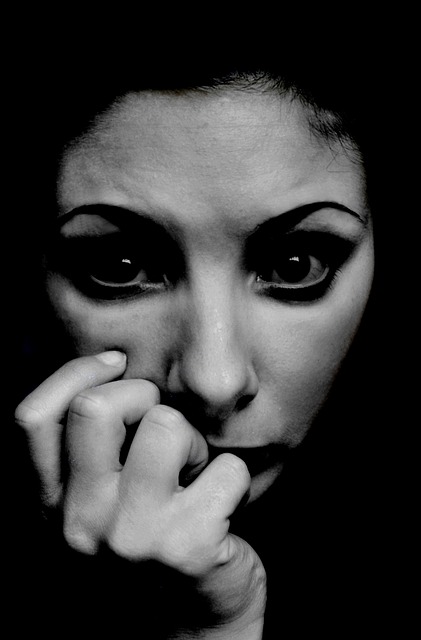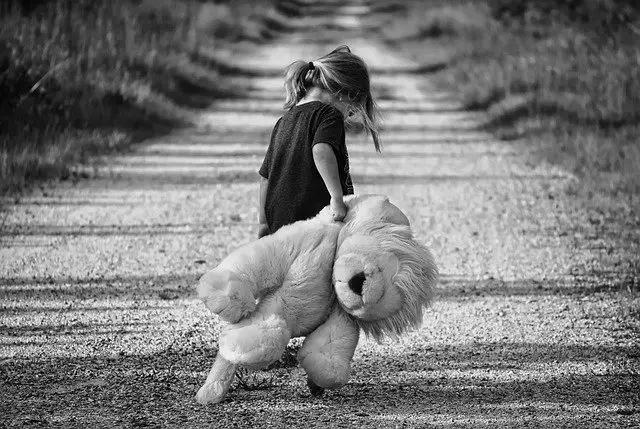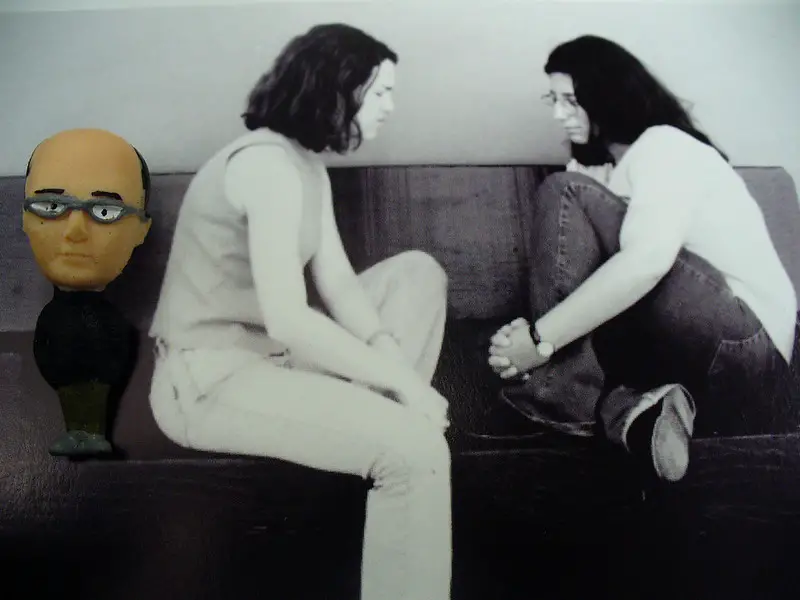The majority of us suffer from “normal” anxiety sometimes, like being nervous about a huge occasion or delivering a presentation in front of an audience.
Also, some of us suffer from more extreme anxiety like worrying too much or getting a phobia. But, these things don’t frequently hinder us from living a “normal” life.
There is clinical anxiety in severe cases. The people who have clinical anxiety are afraid of things that aren’t intrinsically risky (such as public speaking) and have severe reactions to them, like vomiting or fainting.

Chapter 1 – The most prevalent type of mental illness is clinical anxiety
The majority of us would accept that anxiety is somewhat normal. But, few people know that clinical anxiety is really the most common type of mental illness. It is more diagnosed frequently than depression, and one of six people globally will experience clinical anxiety for at least a year in their lifespan.
Additionally, anxiety looks to be a characteristic that challenges the boundaries of both time and culture.
For example, in Spanish-speaking South America anxiety is known as “ataques de nervios,” Greenland Inuit refer to it as “kayak angst” and Iranians mention “heart distress.” But, it’s labeled, these entire terms denote a common state.
Clinical anxiety not just occurs across nations and cultures; however, is also not connected to any specific era and has been mentioned all through document history.
For example, Hippocrates and Plato had their theories about the condition, Spinoza wrote about it, and Sigmund Freud was busy with discovering and defining the process of anxiety.
It is significant to know that anxiety is not a weakness of character. As a matter of fact, some people claim that anxiety is really the motor of creativity, inventive genius, and civilization.

Certainly, a lot of people well-known for their achievement and influence such as Charles Darwin, Barbra Streisand and Gandhi have battled with anxiety. Together with these famous and esteemed people; also, some 40 million Americans have been diagnosed with anxiety.
With that kind of shocking data, it would be bizarre to refer to these entire people as “insane.”
People that have anxiety are far from being a “crazy” person who cannot prosper in life, the author of this book is a successful journalist and editor who can cater for his family and raise children in spite of his chronic anxiety.
Therefore, it is obvious that clinical anxiety is a worldwide illness in which nobody is actually immune. Therefore, how does it feel to live with anxiety?
Chapter 2 – Anxiety is an illness that makes a person’s life difficult, stressful and humiliating.
Life with anxiety is a regular struggle. Some people compare it to having diabetes, as much as the anxious need to deal with painful inflictions daily. Just like a diabetic person who needs to regularly check blood sugar levels and inject insulin, a person with clinical anxiety must always look out for stressful circumstances and be always ready to drug themselves for relief.
Unfortunately, being anxious is an intense limitation to one’s daily life –a lot of people with anxiety are housebound, usually choosing to remain home for them to feel secured and in charge.
For instance, a man that was clinically anxious couldn’t walk within a five-kilometer radius around his house without vomiting blood uncontrollably.
Some of life’s basic requirements are nearly impossible for a person that is anxious to achieve. For example, the author cannot board an airplane or speak in public without taking a mixture of medication and alcohol.
Another severe problem for people with anxiety is attachment, as they have the tendency to become excessively attached to their loved ones.

For instance, while the author was still a child, he couldn’t tolerate being detached from his parents and when anytime they left he would call their friends, convinced that his parents had died.
Another difficulty experienced by people that are anxious is that their action is usually unpredictable and humiliating.
For example, while the author was traveling to a foreign town, he went to almost all of the sanitary facilities; however, none of the real sights, because he was really wracked with nerves.
One time, the author had the chance to visit the Kennedy family. Sadly, as a result of his sensitive stressed-out bowels, he ended up blocking their toilet and leaving the whole bathroom flooded.
Chapter 3 – The reason for anxiety might be discovered in childhood.
There are various theories on what leads to anxiety. For instance, Psychoanalysts assume that anxiety originates from the suppression of taboo views that first occur during childhood.
Consider, for instance, Freud’s Oedipus complex theory. Freud assumed that boys sexually urge their mother and are jealous of their father, whereas girls urge their father and are jealous of their mother.
These sexual or jealous feelings are never acted out since the child is afraid of being disciplined for thinking them. Due to that, the feelings continue and are projected onto an object that makes the child become anxious
Freud himself assumed that his phobia of trains derives from watching his mother nakedness on a train when he was just a child, and yearning for her.
But, the Oedipus complex is now considered an obsolete theory.
A different theory considers mother-child relationships specifically.
Specifically, it is believed that children who tolerate longer separations from their mothers have a tendency to become anxious.
A study conducted on Rhesus monkeys revealed that those separated from their mothers experienced long-term effects such as anxiety, additionally to aggression and social abnormality in adulthood.
The manner in which a mother engages with her child looks to be of specific significance in knowing how anxious the child will become in stressful circumstances.

For instance, one experiment revealed that a child whose mother is caring, loving and mindful acts less anxiously in new conditions (for instance, when a stranger goes into a room and the mother leaves) than a child whose mother behaves ambivalently and anxiously herself.
Therefore, what could have led to Freud’s anxiety? Well, the cause could be by the fact that his mother was depressed after the death of his brother and stopped caring for her older son.
The author as well had an anxious and phobic mother and this may have had an effect on his own anxiety.
Hence, it seems that the manner a child was brought up has a significant impact on its future actions and level of anxiety.
Chapter 4 – Anxiety is an evolutionary adaptation that can be passed on through genetics.
Even though anxiety is not really easy to live with, it is not essentially a deficiency or a disadvantage. As a matter of fact, it is an evolutionary adaptation that can be seen in our genes.
As stated by the “survival of the fittest” theory, we are programmed to be anxious toward risky things, because a person who is scared of a threat like a high cliff or a snake is probably going to survive than someone who is not.
Hence, these phobias are simply formed since they were valuable fears in the past.
But, clinically anxious people are scared of things that aren’t basically hazardous and the power of their anxiety does not make evolutionary sense.
Consider the author’s phobia of cheese as an example. Definitely this not adaptive, neither is it beneficial.
Also, it has also been discovered that the probability of being clinically anxious increases with specific genes.
Higher levels of anxiety can be seen already a few weeks after birth, which shows a genetic aspect to the illness.
Different studies have revealed that 15-20% of infants are considerably more anxious than others just a short time after birth. Also, studies indicate that these infants become really anxious when they become adults.

Also, the author observes some genetic association between his anxiety and his daughter’s anxiety, since she has the same phobias, in spite of her parents raising her in a loving, caring way.
So which genes are accountable for anxiety?
Scientists have been able to find out some of those genes.
For instance, the stathmin gene gives the ability to feel fear. When this is taken out from mice, they do not show fear anymore
Also, there is an association between variants of a gene known as RGS2 and people who are extremely anxious.
Hence, we can notice that a specific amount of anxiety guarantees one’s survival. But, some people are extremely anxious and this may be a result of their genes.
Chapter 5 – Anxiety is a result of the body and hence, it can be controlled by drugs.
Now that we know how anxiety happened through evolution and how it can be transferred genetically. Let’s now explore the physiology of the illness and how it can be controlled by drugs.
Firstly, we understand that anxiety is formed in the brain.
All thanks to functional Magnetic Resonance Imaging (fMRI) brain scans, we can see that anxiety is connected to hyperactivity in specific regions of the brain.
This hyperactivity can be detected in the frontal lobes of the cerebral cortex when concern about future occasions is activated, while increased activity in the anterior cingulate is related to the dread of public speaking.
Apart from understanding where clinical anxiety happens, we also understand that it originates from a faulty neurotransmitter system in the brain.
Specifically, people that are clinically anxious release less serotonin (a neurotransmitter that controls feelings like satisfaction and happiness) than normally anxious people.
Therefore, what can we do with these discoveries? We can check drug treatment. Medication is one means to treat anxiety; however, medication is not for everybody.
Anti-anxiety drugs function by influencing the neurotransmitters found in the brain. The drug Xanax functions by binding to GABA neurotransmitters that prevent the activity of the central nervous system, which has a soothing effect.

Drugs are a common choice for people with clinical anxiety. Only in 2005, there were 53 million prescriptions for Ativan and Xanax.
But, drugs are controversial because they have extreme side effects, risk of addiction and theories that specific medications aren’t any more effective than placebos.
Astonishingly, a 2003 study revealed that just one out of three patients truly felt better after taking anti-anxiety medications.
For addiction, the author himself became addicted to anti-anxiety drugs, as well as Xanax and Paxil. One time he attempted to go without using them; however, the experience was unbearable, and due to that, he went back to taking drugs after only one week.
Chapter 6 – Therapy can as well be beneficial in treating anxiety.
We have looked at how drugs work in the brain. But, there are also other treatment options like cognitive-behavioral therapy or CBT, which we will talk about below.
CBT is from the theory that there are certain behaviors (such as anxious behavior), that can’t be controlled through rational thinking.
Exposure therapy is the most popular method used in CBT. This entails a patient needing to directly challenge what he or she fears so the person can learn that there is no real threat present in the feared thing.
For instance, the author suffers from emetophobia – which is the pathological fear of vomiting. In an effort to treat this, he attempted exposure therapy one time.
Part of the exposure therapy was that he had to use emetics to induce vomiting. Unluckily, this was a disaster, and instead of vomiting from the emetic, he ended up choking.
Also, cognitive-behavioral therapists believe in knowing the cause of the anxiety and that this is usually concealed in the patient’s mind.

The author’s therapist made use of what is called imaginal exposure, thinking that there was a thing more existential that led to his anxiety.
During therapy sessions, the author had to write down a hierarchy of things that made him afraid, then imagine those things and describe his feelings to the doctor.
One time during the session, the author began to cry without actually understanding the reason he was crying. But, the doctor believed that they were on the correct path to discovering a reason for the author’s anxiety.
Up till not, the author is still combating his anxiety with drugs and CBT.
Though it appears that there is a common cure for anxiety, there are definitely means to minimize its intensity. The author hoped that this book would assist him with that.
My Age of Anxiety: Fear, Hope, Dread, and the Search for Peace of Mind by Scott Stossel Book Review
Clinical anxiety is a really common and more severe disease than one might reason. But, there are various means to minimize and treat the illness. It is significant to know that even when a sufferer’s anxiety is not usually under complete control, it doesn’t signify that a life with anxiety is a deprived life.
